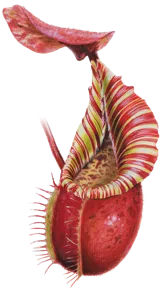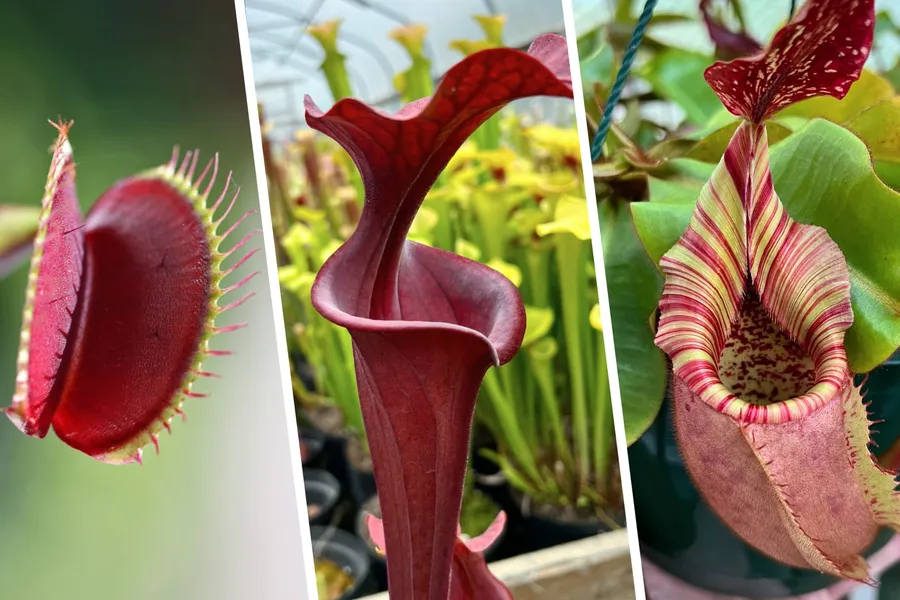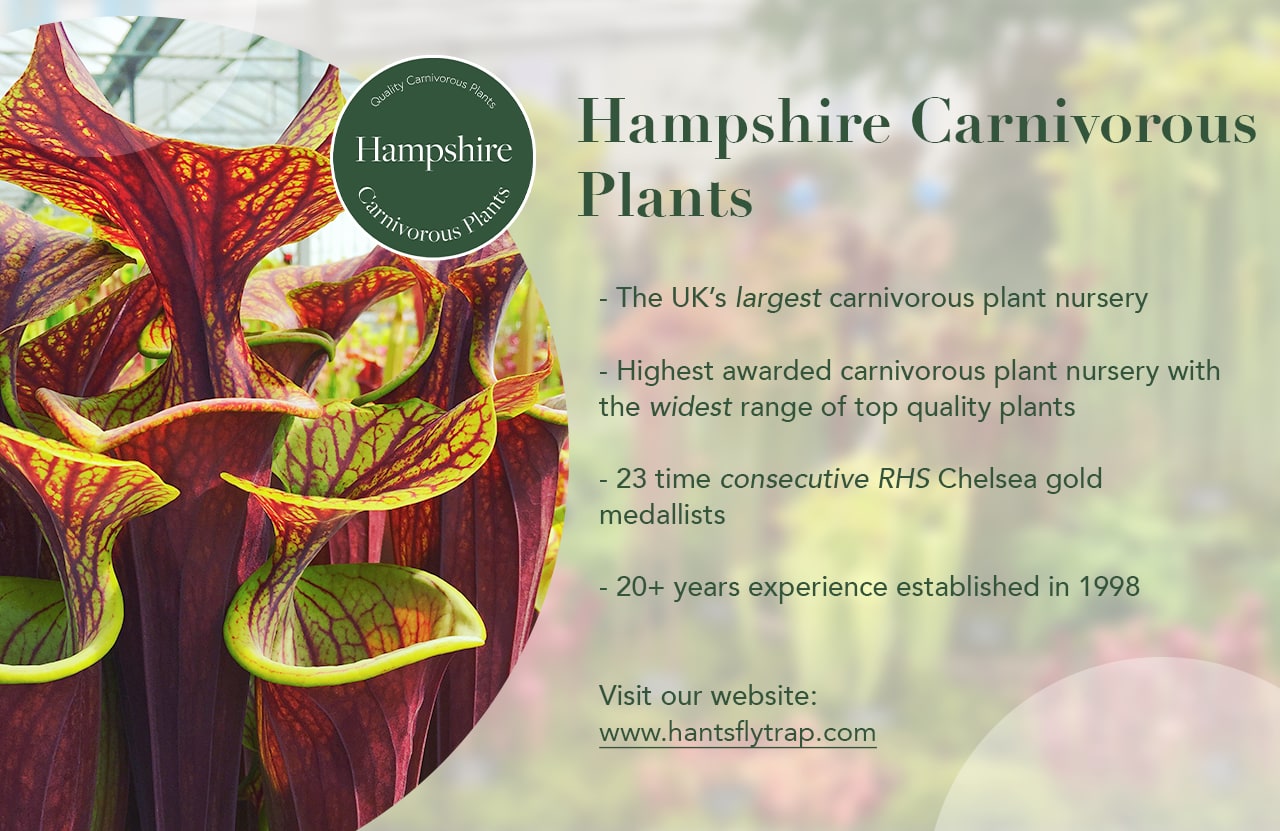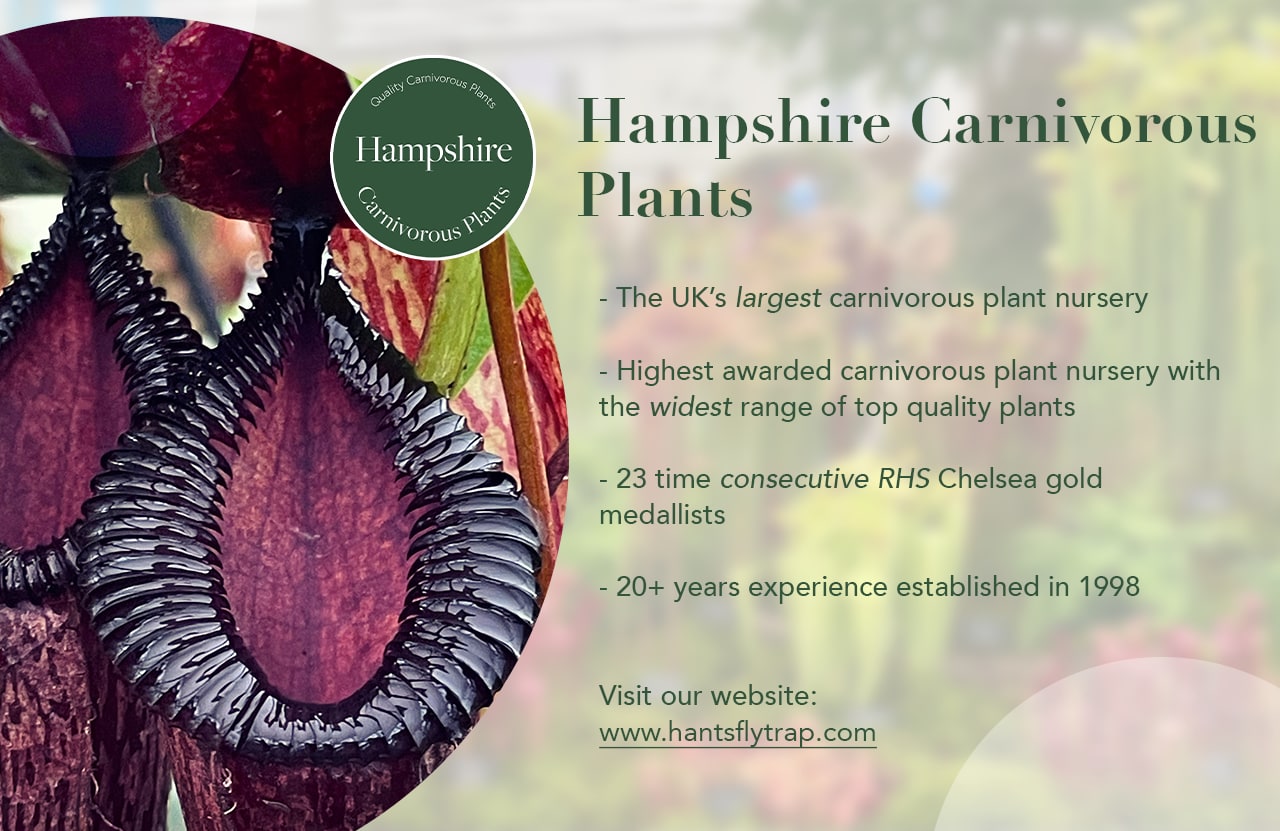Whether you’ve just returned from the garden centre with your first Venus flytrap, or are simply looking for an easy-to-grow carnivorous plant as a unusual gift, you’re in the right place.
On this page I’ve included answers to common questions, descriptions of the main ‘types’ of carnivorous plants, simple growing instructions for popular species, tips for water & dormancy, links to essential resources, and my top recommendations for specialist nurseries. Read on!
Contents
- What kinds of carnivorous plant are there?
- Which carnivorous plants are good for beginners?
- How do I care for my Venus flytrap, Cape Sundew, or Trumpet Pitcher Plant?
- How do I care for my Nepenthes or ‘monkey jar’?
- Where can I find detailed care instructions?
- Where can I buy carnivorous plants?
- Should I remove the plastic dome my plant came in?
- Where can I get carnivorous plant seeds?
- Where can I get purified water?
1. What kinds of carnivorous plant are there?
The Venus Flytrap: Without a doubt the most famous carnivorous plant, the Venus flytrap is - for many growers - a gateway drug! The speed at which a healthy plant will snap shut on an insect is amazing the first time you witness it. There is only one species - Dionaea muscipula - but dozens of weird and wonderful varieties are available.
The Sundews: There are almost 200 species of Sundew (Drosera). They vary enormously in size, shape, and growing requirements, and can be found on every continent on Earth except Antarctica. Most are covered with tentacles which have brightly-coloured, glue-covered tips. These tentacles can move, helping the Sundew to quickly suffocate and digest insects which have become stuck.
The Butterworts: You can find Butterworts (Pinguicula) throughout the Northern Hemisphere, with the highest concentration being found in Mexico and Central America. There are around 100 species in all. Their leaves normally appear green and glossy, growing in a ground-hugging rosette. They are also known as flypaper traps, on account of the sticky leaves they use to catch gnats and fruit flies.

The Pitcher Plants: Pitcher plants typically feature leaves shaped like tubes or vases. Insects slip on the pitcher rim and fall into the digestive enzymes below. There are actually five different kinds (or ‘genera’) of pitcher plant - their common and scientific names are listed below.
- North American Pitcher Plants (Sarracenia) - 8 species
- Tropical Pitcher Plants (Nepenthes) - 170+ species
- West Australian Pitcher Plants (Cephalotus) - 1 species
- The Sun Pitchers (Heliamphora) - 20+ species
- The Cobra Lily (Darlingtonia) - 1 species
In garden centers, you’re most likely to encounter the first two: Sarracenia and Nepenthes. For care advice, keep reading!
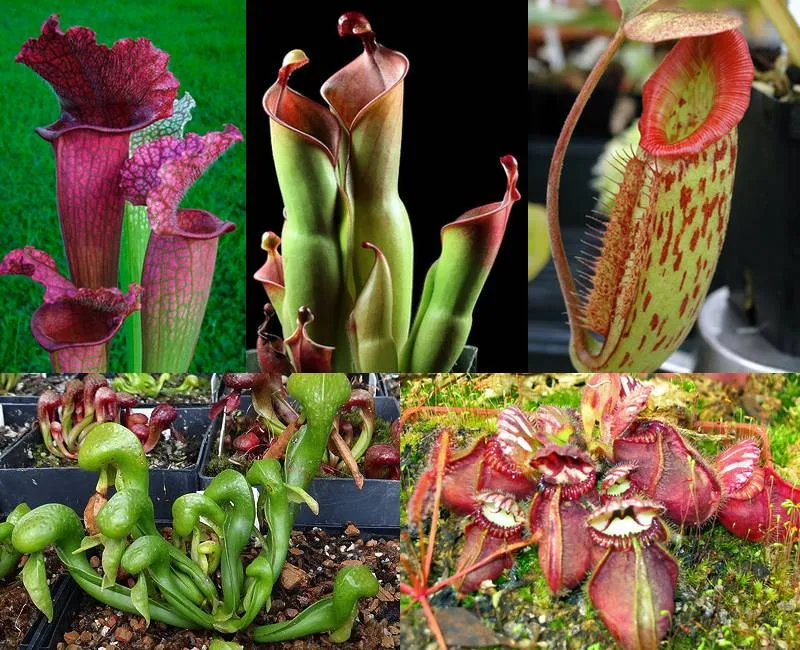
The Bladderworts: With over 200 species, the Bladderworts (Utricularia) are another hugely diverse genus of canivorous plant. Found almost everywhere on Earth, Bladderworts capture prey using bladder-like organs on their roots, which are submerged underwater. Tiny organisms (such as water fleas) are sucked into the bladders in less than a hundredth of a second, where they are digested. Bladderworts are particularly popular for their flowers, which can be as colourful and as beautiful as those of orchids.
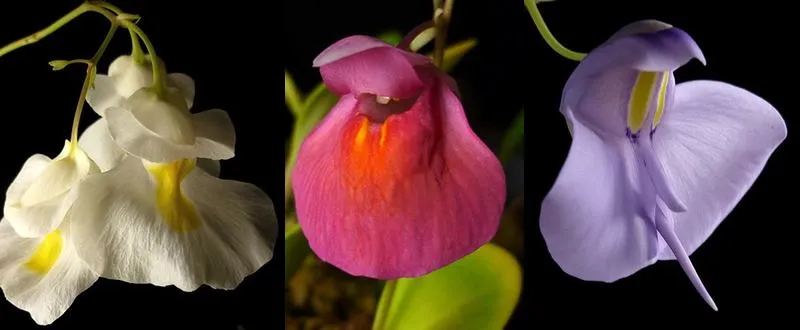
This list is far from exhaustive! There are dozens of other carnivorous and semi-carnivorous plant species out there, but you’re less likely to encounter them as a beginner. They include the Waterwheel plant (Aldrovanda), the Rainbow plant (Byblis), the Corkscrew plant (Genlisea), and the Dewy Pine (Drosophyllum).
2. Which carnivorous plants are good for beginners?
For first-time growers, I recommend the following species:
- Drosera capensis, the Cape sundew: one of the prettiest and most entertaining sundews, this species is also one of the most adaptable. A great fly catcher and a perfect plant for new growers.
- Dionaea muscipula, the Venus flytrap: The most famous of them all! Not necessarily the easiest on this list, but certainly awe-inspiring and rewarding to grow.
- Sarracenia ‘Maroon’, a Trumpet pitcher plant: This cultivar - and indeed most hybrids involving S. purpurea - is one of the most tolerant of all North American pitcher plants. Grown in good light, this plant’s colour is magnificent!
- Nepenthes ‘Gaya’, a Tropical pitcher plant, also known as a ‘monkey jar’: This cultivar is technically N. khasiana x (ventricosa x maxima), and in my experience it’s one of the most vigorous Nepenthes you can buy. It has attractive red and yellow speckled pitchers, and is a particularly good candidate for a houseplant.

For UK growers, all of these plants - and many more - are available from Hampshire Carnivorous Plants. They offer a huge range of Venus flytraps, pitcher plants, sundews, and growing supplies.
For US readers, all of these beginners plants can be ordered from California Carnivores. They offer a huge range of flytraps, pitcher plants, and sundews available for delivery throughout the United States.
You can also get 10% off your order with the code tomscarnivores.
3. How do I care for my Venus flytrap, Cape Sundew, or Trumpet Pitcher Plant?
These three beginner’s plants share very similar growing requirements.
- Light: As much as possible! Venus flytraps, Cape sundews, and North American pitcher plants love full direct sun, so in the US and UK that means a south-facing windowsill, a conservatory, or a greenhouse.
- Water: Sit the pots in a tray filled with 1-2cm of distilled water or rainwater (read more about water for CPs), adding water to the tray rather than top watering. These are bog plants, and the growing media should be kept moist throughout the growing season.
- Compost: Never use normal potting soil or fertiliser! A good mixture for these CPs is fine grade moss peat mixed with either lime-free horticultural sand or perlite, to a ratio of about 2:1. You can also buy ready-made, specially-formulated mixes on Amazon worldwide.
- Pots: Plastic pots work best, but fully-glazed ceramic pots are also fine, provided they have plenty of drainage holes. 12cm pots are large enough for adult plants, and repotting is best done in the Spring.
- Dormancy: Venus flytraps and all North American pitcher plants require a cold winter dormancy between November and February, while Cape Sundews can grow year-round. To provide a dormancy for indoor plants, move them somewhere colder - sit them next to a window in your shed or garage, for example. Your plant’s leaves will go black and die back, only to start growing again in Spring.
- Food: Here on my blog, I’ve written articles on the best foods for carnivorous plants, and reasons why flytrap leaves may turn black.
4. How do I care for my Nepenthes or ‘monkey jar’?
Nepenthes - also known as ‘Monkey cups’ or ‘Monkey jars’ - require slightly different conditions than their bog-dwelling cousins. While the North American pitcher plants and flytraps love water and sun - and lots of both! - tropical pitcher plants are native to the rainforests and mountains of Southeast Asia. As such, many prefer conditions similar to orchids.
- Light: A bright position, but preferably only partial sun - too much can burn the leaves. In much of the northern hemisphere, east or west facing windowsills can be ideal. Terrariums with or without artificial light can also work well, though your plants will eventually outgrow them! Insufficient light can cause pitchers to not inflate.
- Water: Water from above, and aim to keep the soil damp rather than wet. Avoid letting the pot sit in water. The usual rules about water for carnivorous plants still apply. I also recommend filling up the pitchers half-way with distilled water when you first receive your plant.
- Compost: A loose, airy, low nutrition growing medium. Common mixes include long-fibered sphagnum moss, orchid bark, peat moss, perlite, coconut husk fibre (coir), and bonsai substrates like kanuma and akadama. A good mixture is long-fibered sphagnum moss with perlite.
- Pots: Plastic pots work best, but fully-glazed ceramic pots are also fine, provided they have plenty of drainage holes.
- Dormancy: Not required, though your plant may slow down or stop growing depending on the light levels.
- Food: Nepenthes are easier to feed than Venus flytraps, since they don’t require live food! Dropping dead bugs into the pitchers will do the trick. Alternatively, many growers have good success adding liquid orchid fertilisers (such as Orchid Focus) to the pitchers.
For more in-depth cultivation advice, check out my Complete Guide to Growing Monkey Cups. If you’d like to dive deeper into the 170+ species or calculate the requirements of a specific plant, I’d suggest bookmarking my Nepenthes Interactive Guide.
5. Where can I find detailed care instructions?
I’ve written detailed guides for several genera, and these are listed below.
- Dionaea - The Venus Flytrap: A Complete Guide
- Sarracenia - How to Grow Pitcher Plants
- Nepenthes - How to Care for Tropical Pitcher Plants
I’d also recommend signing up to my email list - subscribers receive tips on cultivation and blog updates.
Alternatively if you’d like a printed guide, the best single resource for growers of carnivorous plants is Peter D’Amato’s book The Savage Garden. Peter updated the book in 2013, so be sure to buy the second edition, available on Amazon.
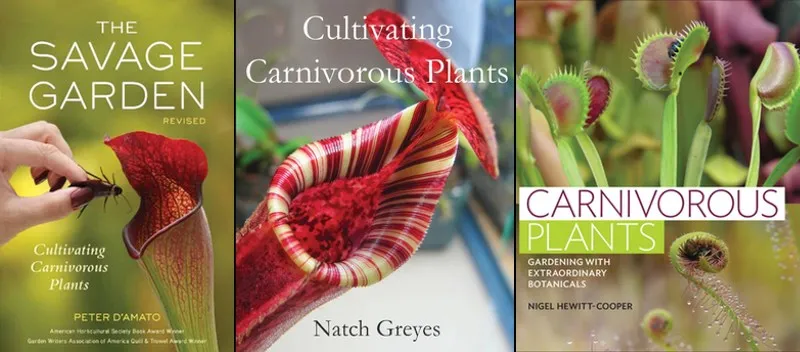
Other recent books which I personally find useful and would recommend include Cultivating Carnivorous Plants by Natch Greyes (link), Carnivorous Plants: Gardening with Extraordinary Botanicals by Nigel Hewitt-Cooper (link), and - for serious growers - the work of Stewart McPherson (link).
6. Where can I buy carnivorous plants?
Wherever you choose to buy from, you’re always better off using a specialist carnivorous plant nursery rather than a garden centre or hardware store. The plants will be much healthier, and you’ll also get better advice on successful growing.
If you’re in the US, I highly recommend California Carnivores. They have a huge variety of carnivorous plants in-stock for delivery throughout the United States, from windowsill plants like the Venus Flytraps to exclusive releases of rare collectors’ items.
You can also get 10% off your order by using the code tomscarnivores at checkout.
If you’re in the UK, then I can highly recommend Hampshire Carnivorous Plants. Owned and run by Matt Soper, this nursery has the widest selection of carnivorous plants available in the UK. Matt’s displays have won more than 20 consecutive Chelsea Gold medals, and he offers a very fast and efficient mail order service through his website.
I’ve done a Q&A with Matt Soper. Look out for his fantastic nursery open days too! www.hantsflytrap.com.
If Matt doesn’t sell what you’re looking for, I can highly recommend the following alternative nurseries in the UK. All have online shops and offer high quality carnivorous plants:
-
South West Carnivorous Plants: Owned by Marit Bakker and Simon Hamming, this nursery - popularly known as the Little Shop of Horrors - was started over 35 years ago by Jenny and Alistair Pearce, making it one of the oldest and most reputable nurseries in the UK. They have a particular focus on green, sustainable growing. www.littleshopofhorrors.co.uk.
-
Wack’s Wicked Plants: Based in North Yorkshire, Peter Walker (Wack) and his wife Helleentje offer a wide range of carnivorous plants via mail order, and also put on medal-winning displays at many of the major UK flower shows. www.wackswickedplants.co.uk.
7. Should I remove the plastic dome my plant came in?
Many plants purchased from garden centers will come in clear plastic domes. Although these mini-terrariums may be fine in the short-term, in my experience mould can quickly become a problem. If your plant is a Venus flytrap (Dionaea) or North American pitcher plant (Sarracenia), I would suggest removing the dome and finding a good sunny growing location - see beginners care above.
Alternatively, if your plant is a tropical pitcher plant (Nepenthes, also known as a “Monkey Jar”), you might be better off leaving the plant in its dome for the time being. These plants grow well in high humidity, and cultivars for beginners are often sold in ‘Bio-Domes’. More detailed guidance on growing Nepenthes is available in my complete guide to Tropical pitcher plants.
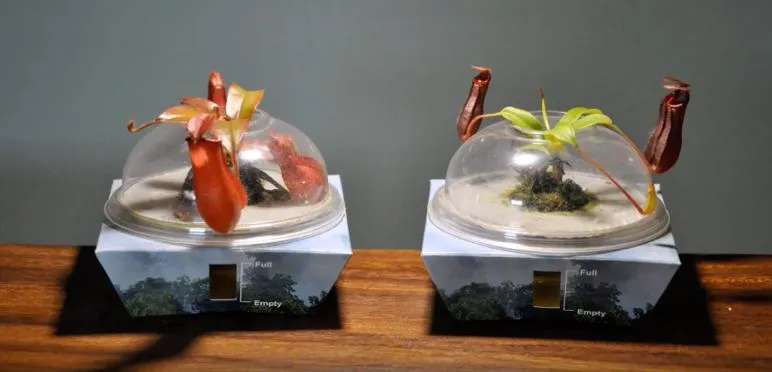
8. Where can I get carnivorous plant seeds?
Always buy carnivorous plant seed from reputable specialist nurseries, or from trusted private growers. Buying from anywhere else (especially eBay!), you run the risk of being scammed with fake seeds or - worse - inadvertently contributing to poaching from the wild.
If you’re new to growing from seed, I’d recommend trying the following:
- Venus flytraps: Requires patience, but it can be very rewarding to grow your own Venus flytraps from tiny seedlings!
- Sarracenia pitcher plants: Many nurseries sell seeds that are from open-pollinated hybrids, making it a fantastic opportunity to grow your own genetically-unique trumpet pitchers!
- Sundew seed: Some sundews - such as Drosera capensis, the Cape Sundew - grow so prolifically from seed that they can even become a weed! They also germinate faster than either of the previous two options, making them particularly great for kids.
Other good options include society-run seed banks, and exchanges in active carnivorous plant groups on social networks.

9. Where can I get purified water?
Pure water is essential for healthy carnivorous plants. This is probably the biggest pain point for new growers.
Most tap water and bottled water is high in dissolved minerals, and the gradual build up of these minerals in the soil will cause your plants to become sickly. Contrary to popular belief, boiling the water first doesn’t help. You need water which is low in Total Dissolved Solids (TDS), such as rainwater or distilled water. TDS is typically measured in parts per million (ppm), and most carnivorous plants require under 100 ppm (and ideally much lower) for healthy growth.
Good TDS readers are inexpensive, and you can buy a TDS reader on Amazon to easily test your water at home. If - like most growers - you live in an area where the tap water is unsuitable, what can you do?
- Collect rainwater: Simply put a few trays outside and collect the water in empty plastic bottles. Once you’re hooked and your collection has grown, you can upgrade to a rain barrel!
- Buy purified water: Distilled and deionised water is available by the litre from all DIY and hardware shops. Alternatively, you can buy distilled water on Amazon. Finally, you might also try your local aquarium specialist - they sometimes sell water purified by reverse osmosis (RO).
- Install your own Reverse Osmosis system: These can be quite an investment, but for large collections will quickly pay for themselves. Compact RO units intended for aquariums are often ideal for carnivorous plant setups.
Thanks for reading! Feel free to get in touch via email if you’ve got any questions, comments, or requests.
